Make your own dairy-free pesto at home in minutes! This recipe can be made entirely oil-free or with much less oil than classic pesto recipes. From sandwiches to pizza to pasta, get ready to spread and dollop because vegan pesto is just as versatile, fresh, and delicious as the original!
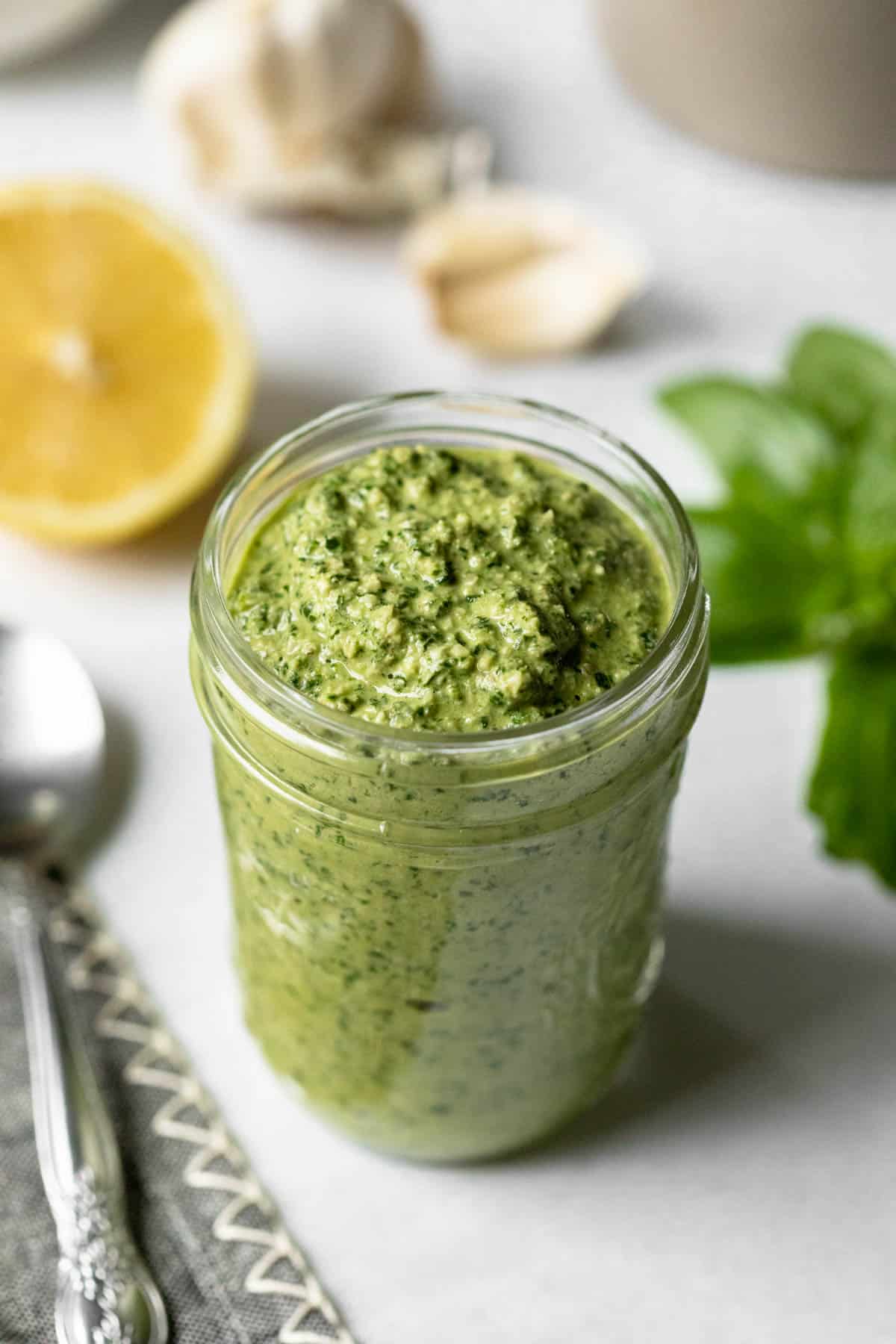
This recipe was originally published in 2018 and has been updated with new photos and instructions.
What's better than fresh pesto? The bright and mouthwatering aroma of all that basil, it's seriously one of life's great culinary pleasures.
The problem for vegans and anyone else who avoids dairy is that authentic Italian pesto recipes contain Parmesan and Pecorino cheese.
But don't worry, it's EASY to make pesto without cheese. And it's so fresh, bright, and amazing, you won't even miss the dairy. We're using lemon juice, salt, and just a touch of nutritional yeast to replace the cheesy flavors.
Or if you're not a fan of nutritional yeast, a touch of white miso works wonders.
Jump to:
A few years ago my husband and I decided to start growing our own basil, and it's been one of the most rewarding gardening endeavors we've tried.
Believe me, we don't have the greenest of thumbs. Yet, we planted seeds in a large container, ensured they got plenty of sun and water, and voila! So much basil.
If you've thought about growing basil but haven't tried it yet, I'm your new biggest cheerleader. So get some good quality seeds next spring, and go for it.
Anyway, back to vegan pesto...
Ingredients and Substitutions
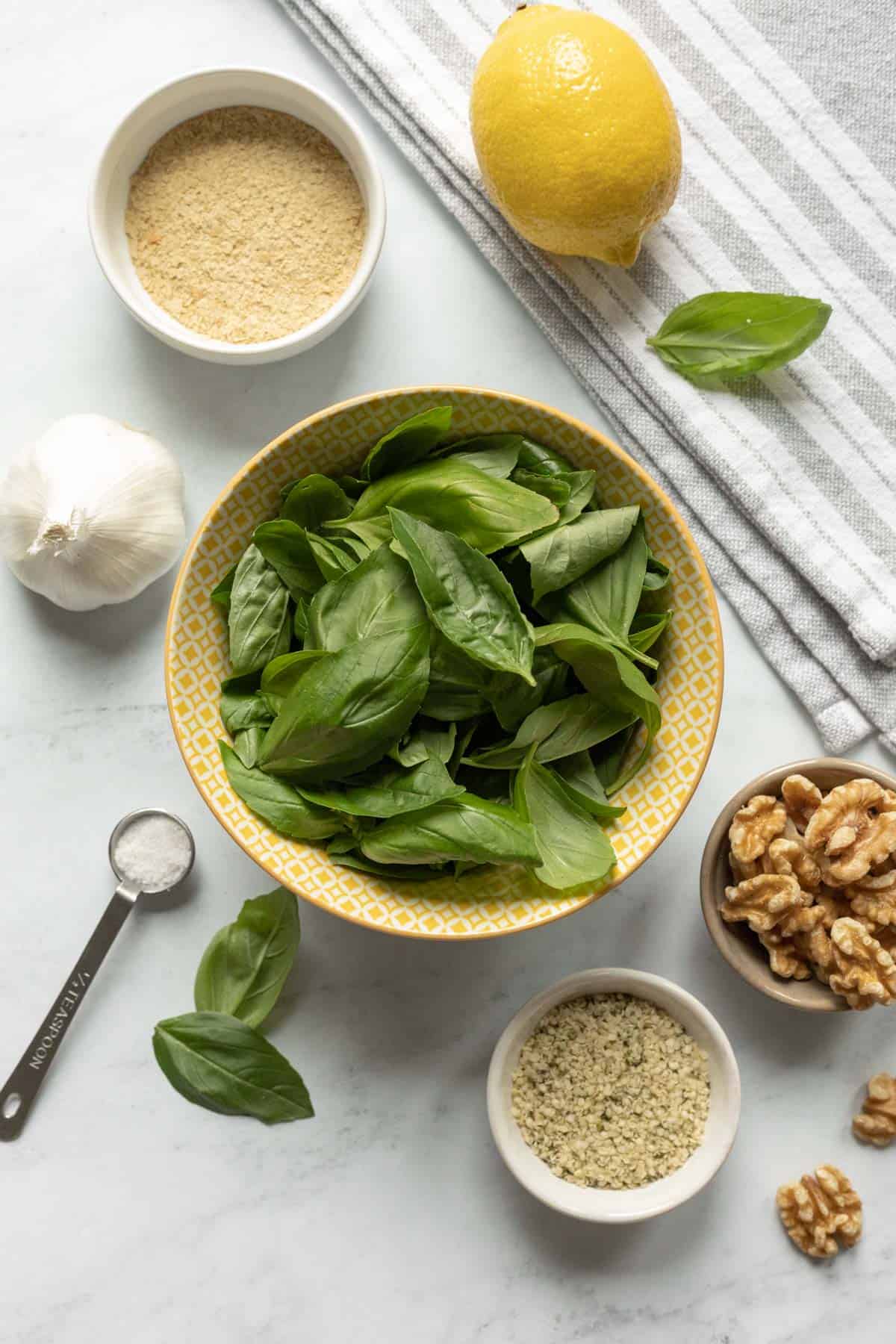
- fresh basil - you'll need about 2 ½ cups, tightly packed when measuring.
- nuts or seeds - pine nuts are the traditional choice but can be expensive and difficult to find. Thankfully there are many other easy and tasty options that work just as well (use "raw" nuts or seeds, not toasted): walnuts, cashews, sunflower seeds, pepitas/pumpkin seeds, and hemp seeds
- fresh garlic cloves
- ice cold water or extra virgin olive oil - if avoiding oil, feel free to use vegetable broth instead of water, if desired.
- lemon & nutritional yeast - these two ingredients work together to replace the cheese in traditional recipes. Or....
Tip: if you're not a fan of nutritional yeast, mellow white miso or chickpea miso also create a slightly cheesy flavor. And since miso is very salty it means you can reduce or omit salt, to taste.
Instructions and Tips
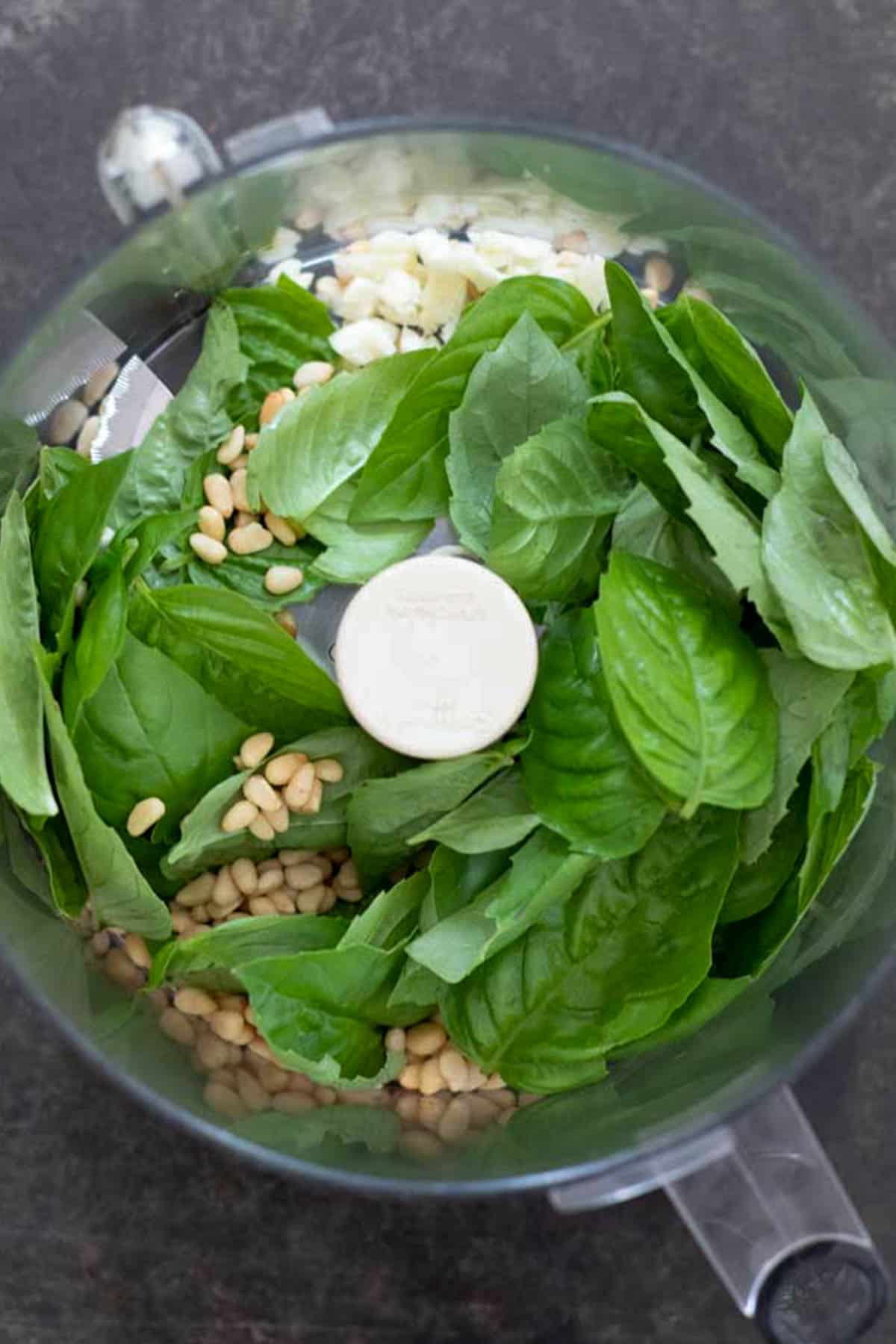
Want to save this recipe? 📩
Keep an eye out for more delicious recipes. Unsubscribe anytime.
Traditionally pesto is made with a mortar and pestle, but these days I think most people reach for a food processor. I know I do. It's quick, efficient, and clean up is pretty darn easy.
To make pesto, you can either add all ingredients at the same time, or start by processing the nuts or seeds with garlic and lemon. Then add the basil.
The method you choose is totally up to you. I recommend experimenting with both to see how your food processor handles the task and whether you prefer one over the other.
Adding the basil later in the process can help keep it bright green and fresh-looking and avoid heating it against the blades. But if you're using pine nuts or walnuts, which are fairly soft, this really isn't an issue.
Process the pesto until it's creamy but still textured, adding splashes of ice water as needed to reach the desired consistency.
Variations
If you're low on basil or just looking for a way to use up some greens, try it with arugula, spinach, or baby kale.
Parsley also pairs nicely with basil. Try a 50/50 blend. Or if you're in the mood for something different, see this parsley-dill pesto.
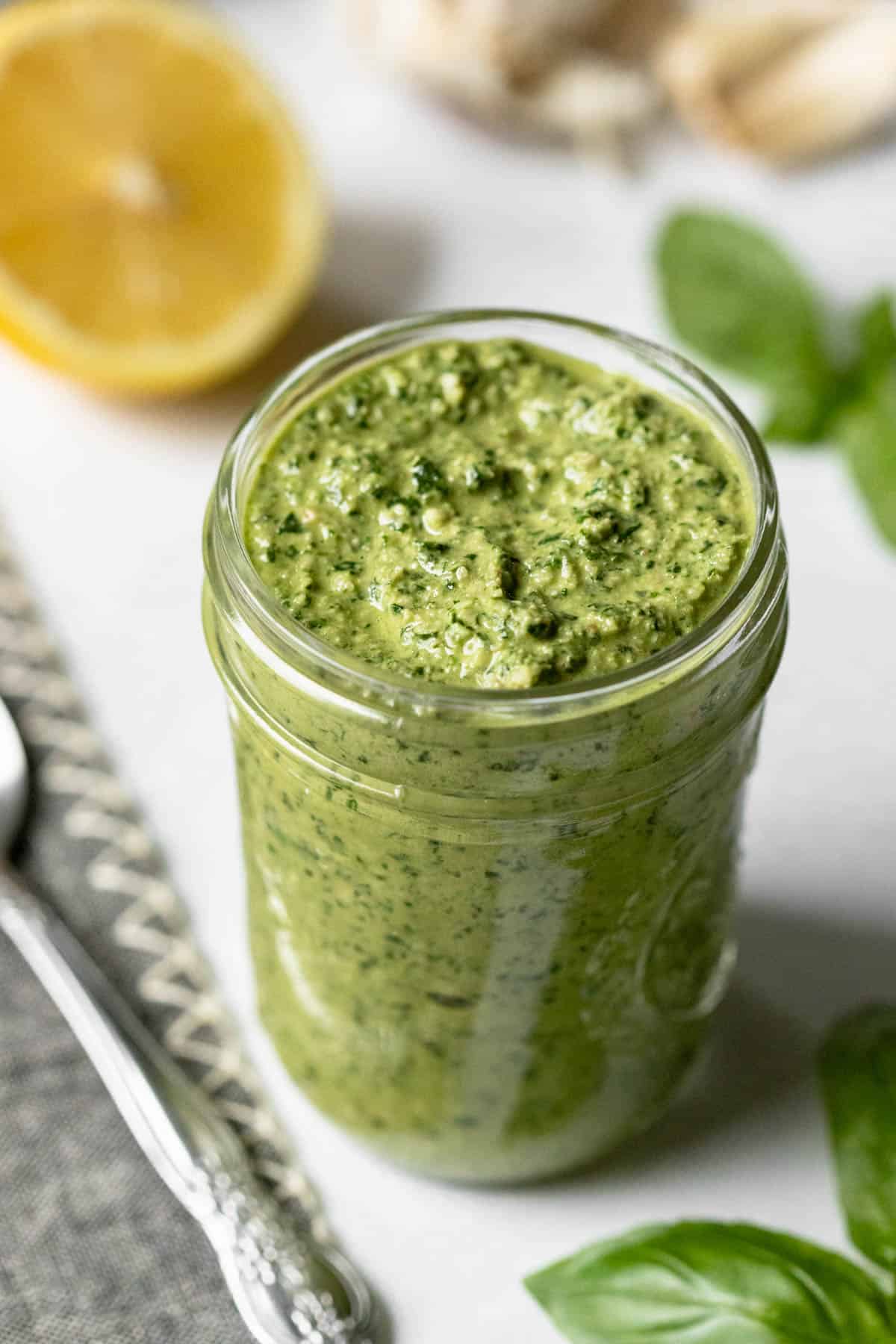
Ways to Use Vegan Pesto
- Pasta - obviously pesto is amazing tossed with pasta. It also takes pasta salad to the next level.
- Pizza - make this Vegan Pesto Stuffed Crust Pizza for your next pizza night.
- Appetizer - serve pesto with crackers, crostini, vegan cheeses, and raw veggies on a snack board.
- Spread - add flavor to sandwiches, wraps, and burgers.
- Garnish - dollop pesto on salads and grain bowls.
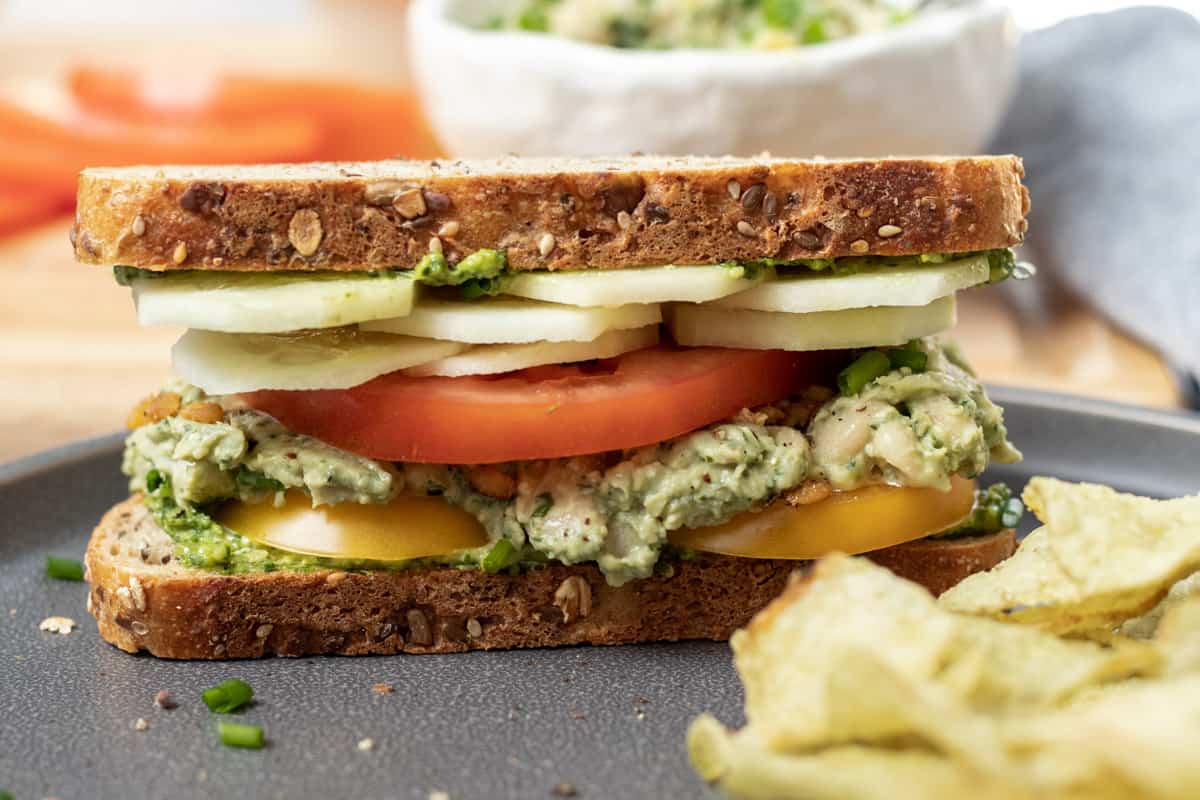
How to Store Pesto
Store leftover pesto in an airtight container in the fridge for up to 4 days. If you include oil in your diet, drizzle a thin layer of olive oil on the surface to protect the pesto from air.
Alternatively, squeeze extra lemon juice on top, or press a piece of plastic wrap against the surface as you might do with guacamole.
For longer storage, freeze pesto in ice cube trays. Once frozen, transfer the cubes to an airtight container and keep frozen for up to 2 or 3 months.
You might also like:
Recipe
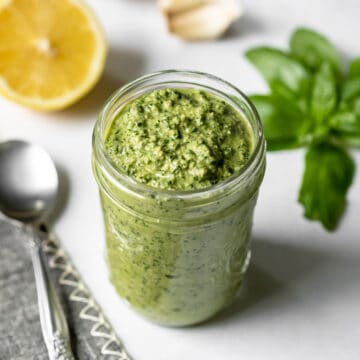
Vegan Pesto (Oil-Free Option)
Equipment
Ingredients
- 2 ½ cups basil leaves, tightly packed
- ½ cup pine nuts or raw walnut halves - or a heaping ⅓ cup raw seeds (pumpkin, sunflower, or hemp seeds)
- 2 tablespoons freshly squeezed lemon juice
- 1 tablespoon nutritional yeast, optional - if omitting, add a bit of lemon zest or white miso, to taste
- 2 small cloves garlic, roughly chopped
- ½ teaspoon sea salt - or more to taste; reduce if using miso
- 2 tablespoons ice cold water OR extra virgin olive oil - you may need a bit more depending on the desired consistency
Instructions
- Add basil, nuts/seeds, lemon juice, nutritional yeast, garlic and salt to the bowl of a food processor. Blend until paste-like, stopping to scrape down the sides of bowl as needed.
- With the food processor running, drizzle in the olive oil and/or water.
- Taste for saltiness and acidity, adding more salt, lemon or nutritional yeast, if desired.
Notes
Estimated Nutrition (per serving)
Nutrition information is an estimate and will vary depending on the exact amounts and specific products and ingredients used.

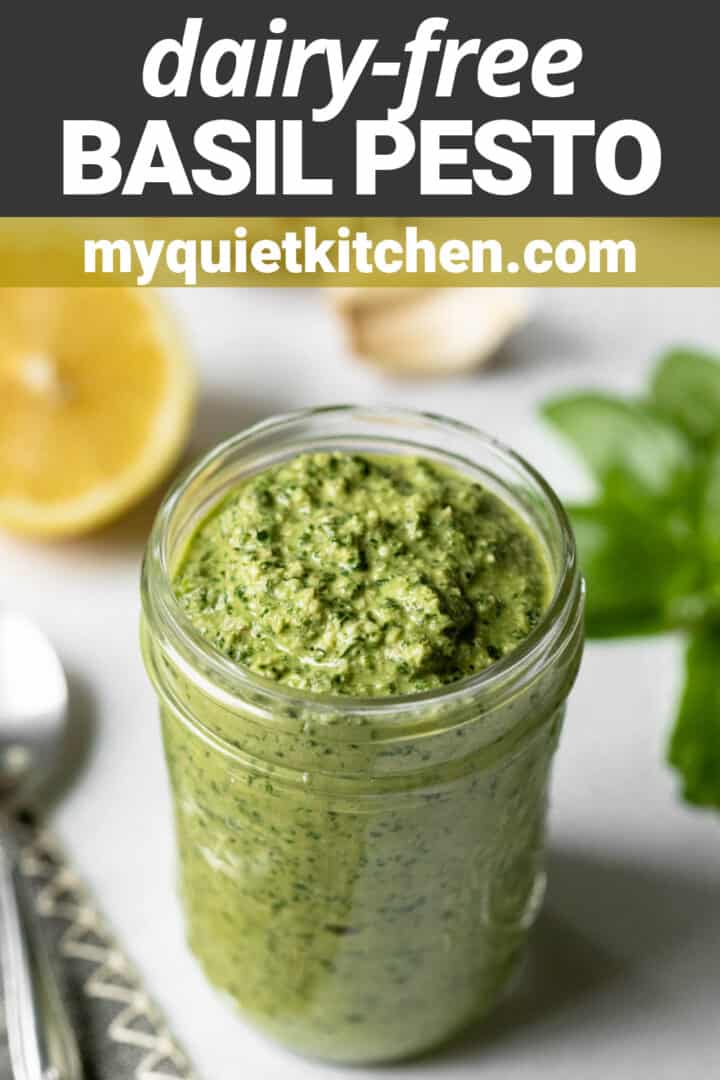
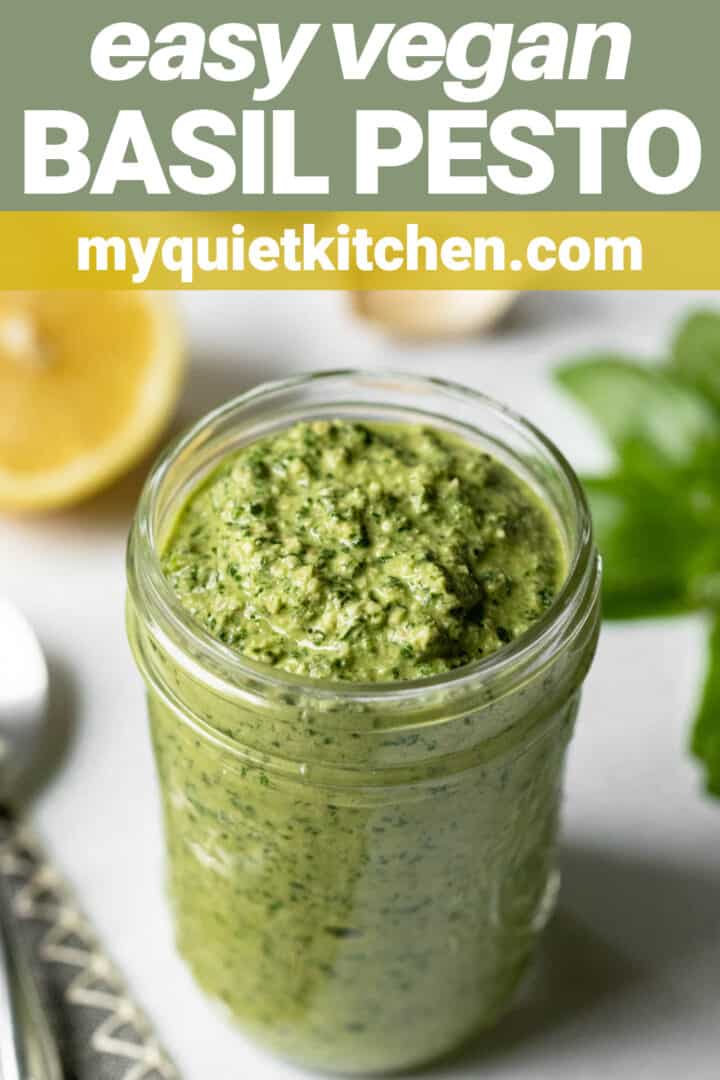
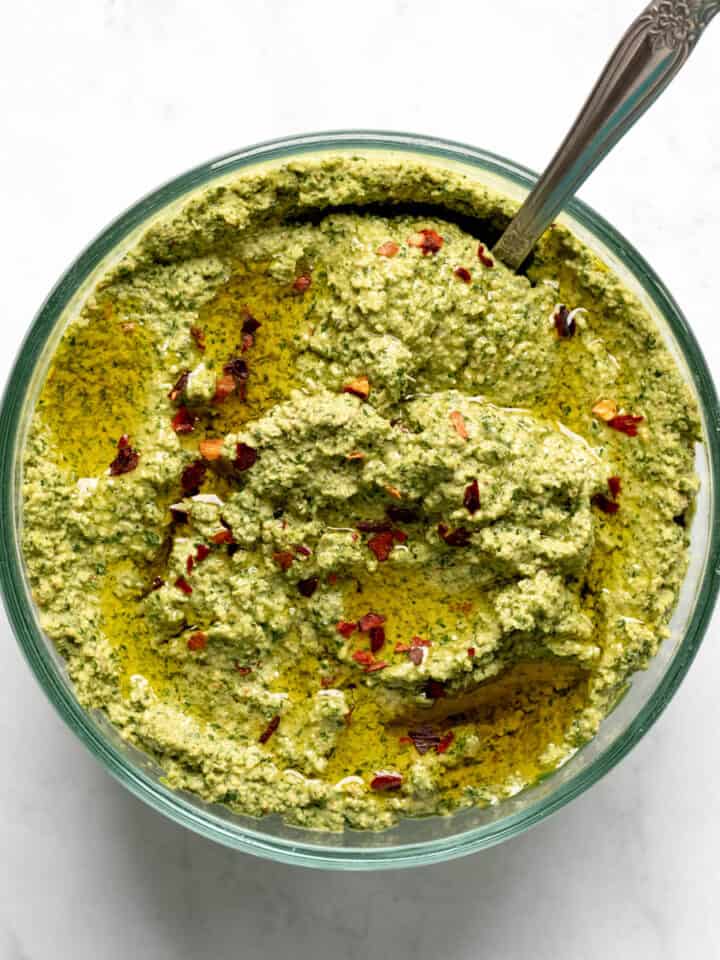

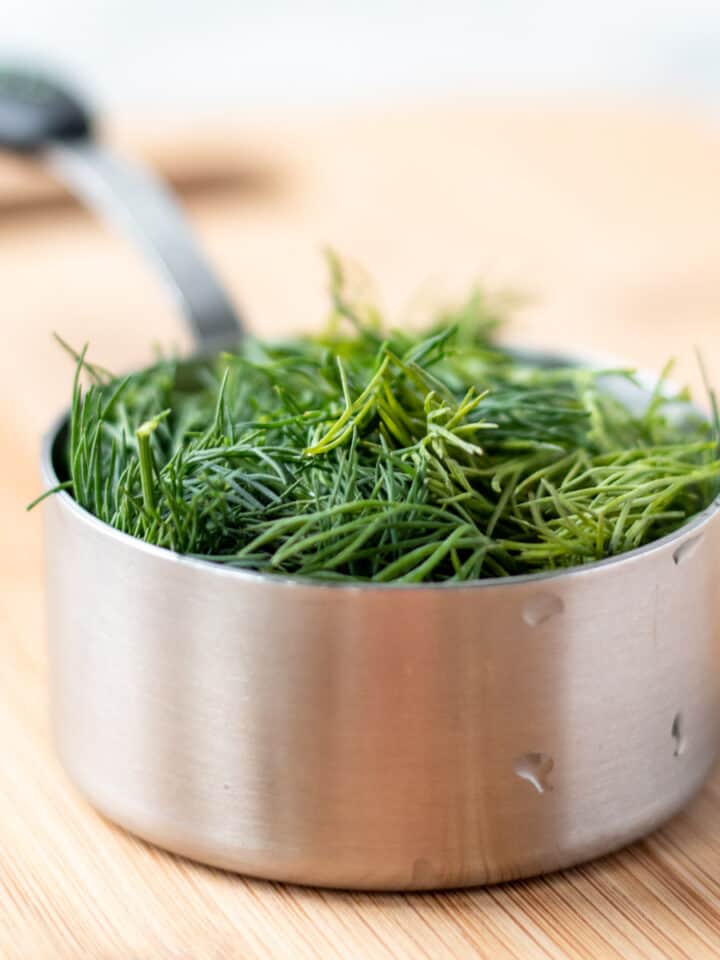
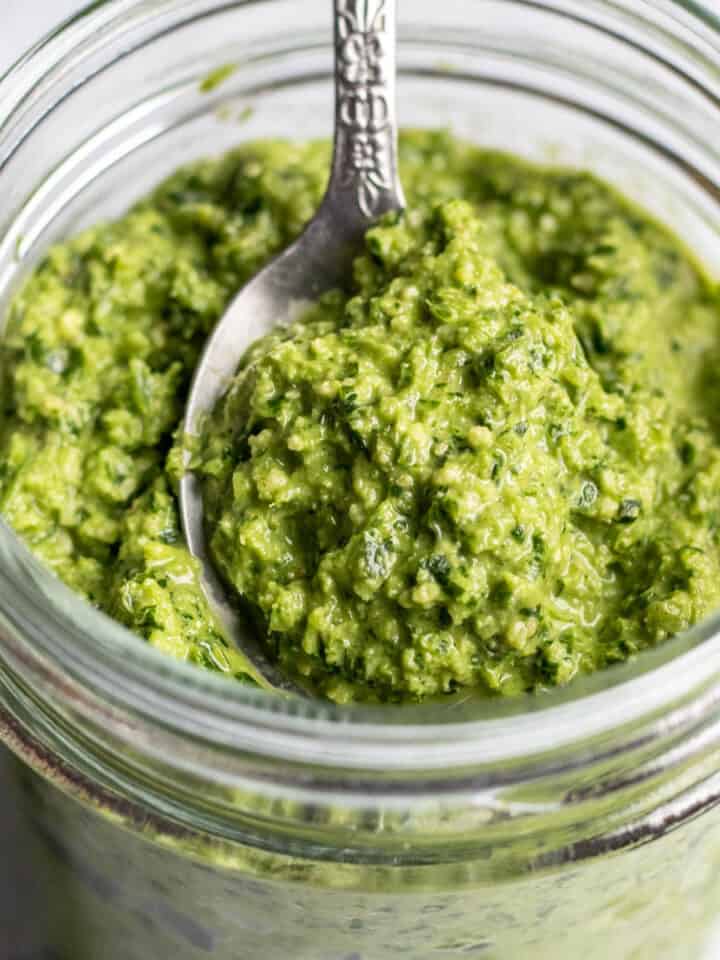
Judy Jane says
This is my new favorite no oil pesto! Love the lemon. Made 8'ice cubes. I substituted fava agua for the 2T water.